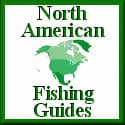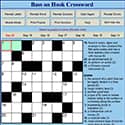Bass on Hook is Supported by our readers. As an Amazon Associate We earn commissions from qualifying purchases. For more informtion read our Amazon Affiliate Disclosure and Affiliate Disclosure Policies.
Full Contact Fishing
By Nick Ruiz
Full contact fishing you ask?
Could this be a new form of "extreme fishing" requiring pads and a crash helmet?
In a word no.
However, for many it may be a style of fishing that is very unfamiliar and in some cases may even seem assinine.
The basis of full contact fishing lies in the fact that instead of fishing in and around cover and structure you fish on it.
For all intents and purposes the cover becomes part of the overall presentation.
Immediately one might assume this falls under the category of "fishing fad" but the truth is it has been a secret of many top pros for years.
The true beauty of this kind of fishing is that not only is it challenging but also nine out of ten times it is something that the fish have never seen before and on pressured waters and in tournaments, this just may be the underlying secret to success.
An appealing point to this kind of fishing is that unlike many other "new" techniques available no new equipment is needed.
In fact, chances are that the average bass angler has all the tools needed to be a highly effective full contact angler.
Jig and pig rigs, Colorado blade style spinnerbaits, tube style baits, a variety of Texas rigged critters as well as some crankbaits can be used in this discipline.
Usually experience and an anglers attuned eye will determine what's the best bait to throw when full contact fishing.
For purposes of demonstration and instruction I will list my favorites here but this is one of the few styles of fishing where ones imagination can come into play.
One can envision what the lure might look like while passing in, around and on cover.
This essentially means the sky's the limit for bait selection.
Baits I Like To Use When Full Contact Fishing
I feel one of the most effective yet ignored baits to throw in a case like this is a stand up style crawfish or spider jig.
These can be purchased either pre assembled or the bait and the jig head can be purchased separate.
I prefer to opt for the latter and select individual components.
For the actual soft plastic jig I have found great success with Berkley's 3-inch "power" spider jig in either black or pumpkinseed.
For the stand up head I have found that the "Football Head" from Bass Pro Shops has been more than effective.
This because number one, it has a near 90 degree rest point and number two, it has proven itself nearly snag proof if used correctly.
Rigging is very easy, simply thread on the soft plastic as you would for any other type of fishing.
Now you're ready for your first lesson in full contact fishing.
Proper Techniques For Full Contact Fishing
Remember that any type of cover that you know holds fish will do but the secret is to find the cover that holds fish and will make for a good bait presentation.
It is this reason that I like to fish large expanses of laydowns as well as dock structure.
Position the boat as close as you feel the fish will allow without spooking and provided there is no back seat angler get the nose of the boat pointed directly at the structure you wish to fish.
Now the cast can be made with either a pitching or flipping method or if you happen to be very accurate with side-arm or back-hand type casts, these can be used as well.
Once delivered, after some practice you should be able to virtually "steer" the lure through the cover.
At this point find a shallow trunk or branch and try to "sit" the lure on it.
If you have achieved this you should now have a spider jig sitting on a log or branch with some deeper water on either side.
Here's where the beauty of this type of fishing comes in, attempt to "walk" it off the branch and allow a free fall to the next piece of structure.
Repeat this as often as the cover will allow attempting to "stepping stone" your bait through the nasty stuff.
Chances are most fish will hit it a second or two after it begins free falling.
If fish are more aggressive they may even come up to pluck it off the cover.
This phenomenon only occurs when fish are truly aggressively feeding.
Another wonderful advantage of this kind of fishing, is on the off chance no fish are caught, each and every cast is a lesson in lure control and will make a better presenter out of all of us.
Spinnerbaits Are Great For Full Contact Fishing
The next presentation I like to use when full contact fishing is the spinnerbait.
I prefer a lighter spinnerbait with a larger Colorado style blade.
This combination allows for a good, straight, slow free fall very similar to slow rolling.
The spinnerbait offers a little more control over the lure than the spider jig but for all intents and purposes the presentation is the same.
One slight variation I like to add is a small twitch or jerk halfway through the bait's free fall to the next branch or log.
I have found that that twitch or jerk is enough to get even the least aggressive bass to take a whack at a bait presented in this manner
In cases where the cover proves to be ultra heavy there is a slight modification that can be made to the spinnerbait to make it a little easier to free it from snags.
By taking a page out of a trout anglers book of tricks, flattening the barb on the spinnerbait hook will in many cases save you from having to break off or head into the cover to free a snagged bait and spooking fish off.
One might say, "but won't that just about guarantee half the fish I catch will throw the hook?"
Not so, as many of the angler vs. fish battles in this form of fishing last something in the neighborhood of ten to fifteen seconds.
Usually if a fish isn't pulled free of the heavy stuff in that time chances are he's not coming out and there's very little one can do about it.
One more point about the spinnerbait, if fish happen to be on the warpath, feeding on anything that moves, don't hesitate to speed this technique up to an almost "branch hopping" type retrieve.
Also be sure to keep the presentation going once the bait is out of the cover.
Many fish have followed and struck baits that were well clear of the cover.
The One And Only Gitzit Is Very Effective
One more great bait for this style of fishing is the Git-Zit or tube style bait.
Under normal circumstances I consider these baits "dock hounds", because they are exactly that.
Gitzits are my number one choice for probing in and around docks.
With medium spinning tackle a good working knowledge of the "skipping" cast and a good eye for productive docks, an angler can really clean up with this technique.
In this case the more support beams, pilons and in water steps or ramps available so much the better.
I say this because usually these are the docks that hold fish as well as the kind of docks that are a blast to fish with a tube bait.
For this application I prefer the tube bait that bares its own namesake, the Git-Zit from Bud'z Fishin' Wayz, because of the way they are constructed as well as a near infinite color and size selection.
My favorite way to rig these baits for this application is Texas style with a 1/0 - 3/0 Gamakatsu EWG hook with either a very small bullet weight or an internal clip type weight like the ones produced by Eagle Claw.
As far as the actual presentation goes, this is where an anglers imagination can be unleashed because each presentation can be a challenge in and of itself.
Summing Up Full Contact Fishing
There are no set guidelines for fishing in this manner so for the sake of completeness I will list a few of the more popular methods.
As I mentioned before, steps and ramps can be very productive when full contact fishing.
With that in mind, when one sees steps leading down into water like those commonly found on swimming and free floating recreational docks do not hesitate to let your bait "walk down the steps" into the water.
While doing this keep a sharp eye out for ambush strikes as the bait progresses to deeper and deeper steps.
If you can see that the steps you are fishing come to an end just under the water, with the bait on the last step s-l-o-w-l-y inch the lure off the step into free fall.
Many ambush strikes have come from fish that were positioned under the dock that were waiting for prey to be silhouetted by the sunlight.
One more quick and easy way to probe docks for active fish is to fire a bait as far back into structure as possible and with a moderately slow but steady retrieve, swim a bait back to the boat allowing it to contact everything in its path.
This is a great way to probe structure for fish when preparing for a tournament or pre fishing for a guide customer as such it is a great deal faster than the other techniques mentioned above.
Before closing, I feel it should be noted that while many of the techniques mentioned above require the use of docks as well as other man made structure, there is one thing all these pieces of structure have in common.
They don't belong to us.
And chances are they do belong to someone else.
With that said, I beg you keep this in mind when fishing them.
Use common sense and common courtesy.
If a cast looks like it may hang up on someone's dock or boat tie up ropes or may damage and deface their dock or other property in any way, please as much as you think it may yield fish don't make the cast.
Especially if it looks like your bait may wind up stuck on the surface of the dock.
I don't' think we want any lake front home owner in the hospital receiving a tetanus shot because they didn't notice the 2/0 worm hook that wound up in their foot near the swim ladder.
Lest we remember how unpopular bass fisherman are with people who live on lakes.
Between early morning tournament noise, excessively loud and fast boats and blatant disrespect for lake front structure, we need to make it a point to maintain a degree of professional courtesy.
I like to think that this point goes without saying.
Now, with my impromptu public service announcement out of the way, I ask that as unorthodox as this type of presentation may sound, the next time you hit the water you at least give it a shot.
It certainly is an extremely rewarding method of presentation as well as a very challenging and effective one and certainly worth the extra effort.
Catch ya' on the water...
Nick Ruiz
Look for other articles written by Nick Ruiz in Nick's Pro Staff Angler Profile










